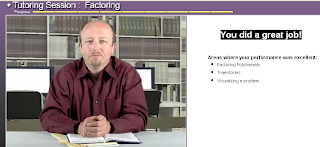Learning Objective(s)
• Understand how to solve rational equations.• Learn to apply rational equation solving techniques to real world problems.
Assessment Type
This differentiated assignment can be completed in any context (remote or classroom) where students have access to the internet. The assignment varies based on assessed student mastery, but all students will turn in a set of notes and practice problems.Assignment Details
Before this class session, identify which students need additional review of rational equation solving techniques and which students are ready to go on. You can do this with an in-class quiz, based on completion of problems in a class warm up, or even after grading a chapter test on the material.Students who are having trouble simplifying and solving expressions are not ready to tackle the word problems in the applications section. It would be almost impossible for them to identify whether they are making solving errors, simplification errors, or setup errors. They need to master the basics first or they will only be frustrated by applications.
Have them view, take notes on, and work practice problems based on Solving Rational Equations. You can use the practice problems associated with this topic. Have your students complete at least five of those after having viewed the video. Otherwise, assign related problems from the textbook.
Meanwhile students who have achieved mastery would be bored by further review. Have them move on to the NROC lesson, Applying Rational Equations, viewing and taking notes on it before working through the problems presented in, “Conserving Water,” the section’s applications-based tutorial simulation.
For homework, all students should complete anything not done in class. In addition, assign all students completion of five additional practice problems from the section or sections of their choice. For full credit, they must record the lesson’s name (and page number if using a textbook), problem number, and enough information from the problem for someone to answer the question asked without referring to the textbook or computer. They can do this on a separate page with its own title of, “Rational Expressions Homework--Problems of Choice,” or they can separate this from their class work with a horizontal line and the new title as a subheading.
Instructor Notes
• Students who complete the remedial assignment should be given the opportunity to complete the applications assignment as extra credit. Likewise, students who’ve gone on to applications should be allowed to complete the other assignment for an equal amount of extra credit. This way, no one feels like they were denied an opportunity to earn credit for learning.• You can also allow those who are really struggling with rational expression basics to earn credit for revisiting the previous lessons’ material in a similar manner (taking notes and completing practice problems).
• Do not allow self selection of which in-class assignment to do, as many students will group themselves by friends rather than ability.
• If you have students who find they cannot complete the assigned practice problems redirect them into taking notes on the worked example problems from the same section (like Solving Rational Equations) or a related previous section’s video (like Simplifying Rational Expressions) instead. Ultimately, these students will earn the day’s credit for turning in a set of notes from the video and a set of worked practice or copied example problems. Re-assign the original practice problems to them as homework instead of allowing them the self-selected problems.
• Anything not completed during class time can be finished as homework. Email the required links to your students or make them available on the class website.
Rubric
As there are three clear parts to the work assigned here, I would grade this on 15 point scale with 5 points per section.5pts—Completion of the notes from the correct section and overall reasonable neatness of layout.
5pts — For the review group: Correct completion of at least 5 practice problems (or notes on example problems) from the assigned section.
For the applications group: Clear recording and correct completion of all problems from the tutorial sim.
5pts—Correct completion of 5 practice problems of the student’s choice, labeled as requested with work shown.
Note: For all problems (including those from the tutorial sim) work must be shown, answers written out, and enough information recorded to make it clear what was asked in the question.




